How to Choose the Best Types of Paint for Kids’ Rooms: Key Features & Top Colour Picks
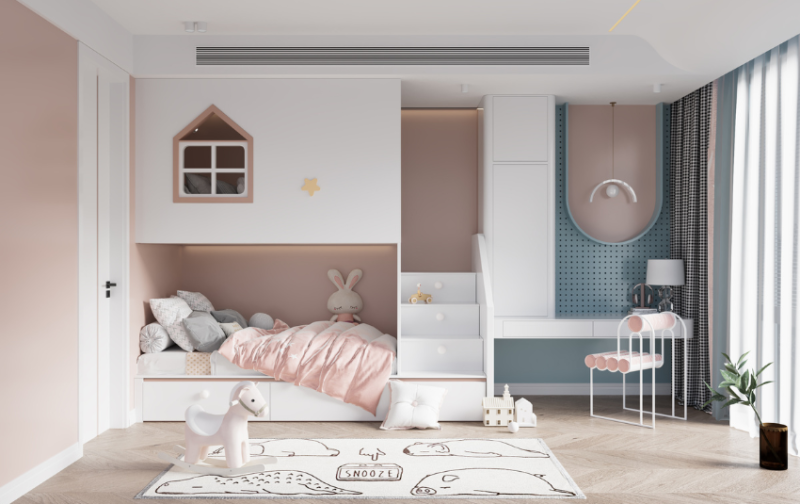
If you have kids, you’ll know how challenging it can be to keep the walls looking pristine. Whether it’s crayons on the walls, accidental spills or the occasional bump, children’s rooms often bear the brunt of daily wear and tear. Therefore, choosing a durable, easy-to-clean paint is essential for withstanding your child’s active routine without requiring constant touch-ups. The key is finding a balance between safety, durability and style.
In this guide, we’ll explore the important attributes to look out for when selecting paint for your child’s room. We’ll help you find the best solution that fits your needs and home décor while standing up to the demands of your little ones.
What to Look for in Paint for Kids’ Rooms
It’s important to look at some vital elements that make a particular type of paint suitable for your child’s room. Some features include low or no-VOC paint, lead-free properties, and a high sheen finish.
A Low or No-VOC Paint
When selecting paint for your kid’s room, one of the most important factors to consider is its level of Volatile Organic Compounds (VOCs). VOCs are chemicals found in many paints. They can evaporate into the air and continue to off-gas for years, long after the paint has dried.
Prolonged exposure to VOCs can lead to headaches, dizziness and lung irritation. Studies have shown that VOCs are also linked to an increased risk of certain types of cancer, especially nasopharyngeal cancer and leukaemia. To ensure a healthier home environment, we recommend choosing paints with low or no VOCs.
Additionally, allowing adequate drying and curing time for the paint is crucial. VOCs are the most potent during the drying process, so it’s important to keep children and pregnant women away from freshly painted rooms until the paint has fully cured.
High Sheen Paint
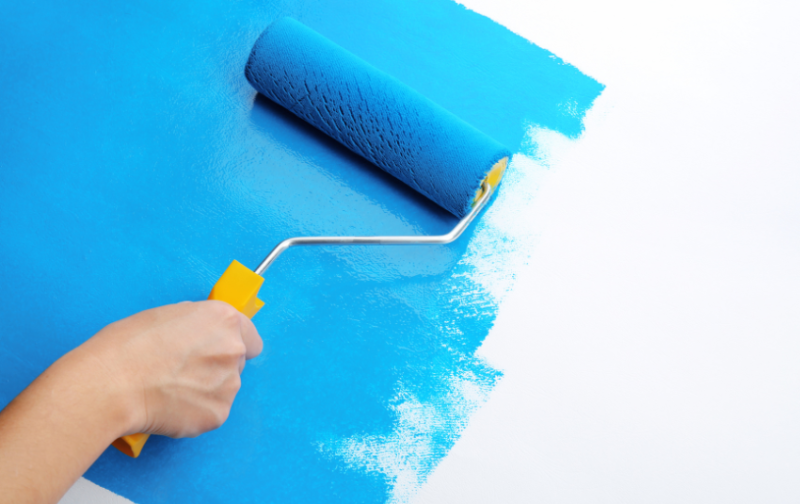
A higher sheen finish like eggshell, satin or semi-gloss is a far better option than matte. Matte finishes tend to show scuff marks easily and are difficult to clean. In contrast, higher-sheen paints are much easier to wipe down and maintain, making them ideal for high-traffic areas or spaces that experience frequent wear and tear.
Lead-Free Paint
Choosing non-toxic, lead-free paint is also very important to minimise potential health risks and ensure the room is safe for kids. Lead is a harmful substance that can lead to serious health problems, particularly for children under 6 years old, who are especially vulnerable to lead poisoning. Lead exposure can significantly impact their mental and physical development and in cases of extremely high exposure, it can even be fatal.
What is the Best Colour for Kids’ Rooms?
When choosing a suitable paint colour for your child’s room, you may want to consider colours that are visually appealing yet soothing.
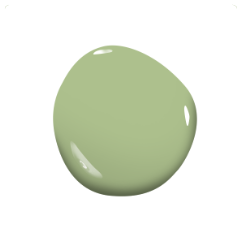 | 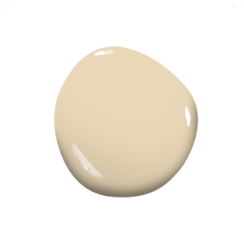 | 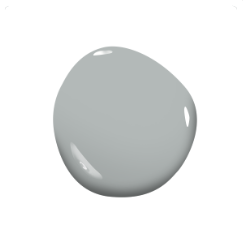 |
| Calm Green 9037 | Cameo White BS 08C31 | Stiletto Gray NP N 1992 P |
Colours not only influence the room’s atmosphere but can also help hide scuff marks and stains. While white is a popular choice, it can show dirt easily. So consider lighter, neutral tones like sage green, warm beige or soft grey. These calming shades help create a serene environment while masking light smudges and handprints.
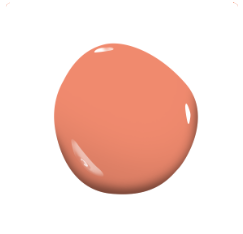 | 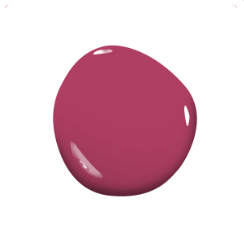 | 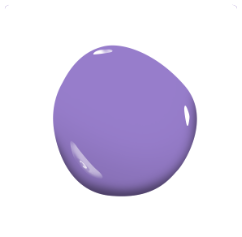 |
| Sea of Coral NP YO 2395 T | Fascination NP R 1295 A | Violet Sequin 9076 |
For a more vibrant, playful look, bold colours like coral, magenta or purple can work wonders. These hues exude energy and fun, appealing especially to older children, and can be used on accent walls to divert attention from any wall imperfections. Avoid overly bright colours like red or yellow as they can be overstimulating and make it harder for your child to relax.
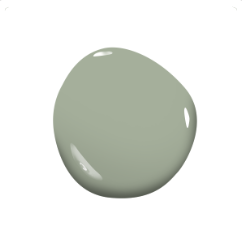 | 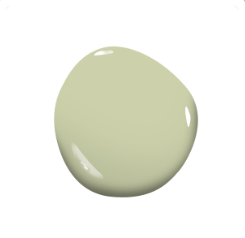 |  |
| Misty Spring NP N 3264 P | Froggy's Leaf NP BGG 1748 P | Ripe Kiwi NP BGG 2598 A |
If you’re looking for something timeless, choose deeper, muted shades. Soft sage or olive green can offer a sophisticated feel as your child ages. Adding patterns or artwork to the walls, like stripes or abstract designs, can also keep the space fun and creative.
| Best colours to try | Colours to avoid |
| Neutral tones:
● Sage green ● Warm beige ● Soft grey
Vibrant colours: ● Coral ● Magenta ● Purple
Timeless colours: ● Soft sage ● Olive green |
● White – easily shows dirt
● Red – overstimulating ● Yellow – overstimulating |
Ultimately, the best colour for your child’s room will depend on their personality and style. Make sure to get your little one involved in the decision-making process if possible!
Choose Nippon Paint’s Odour-Less Products for a Safer Environment for Your Kids
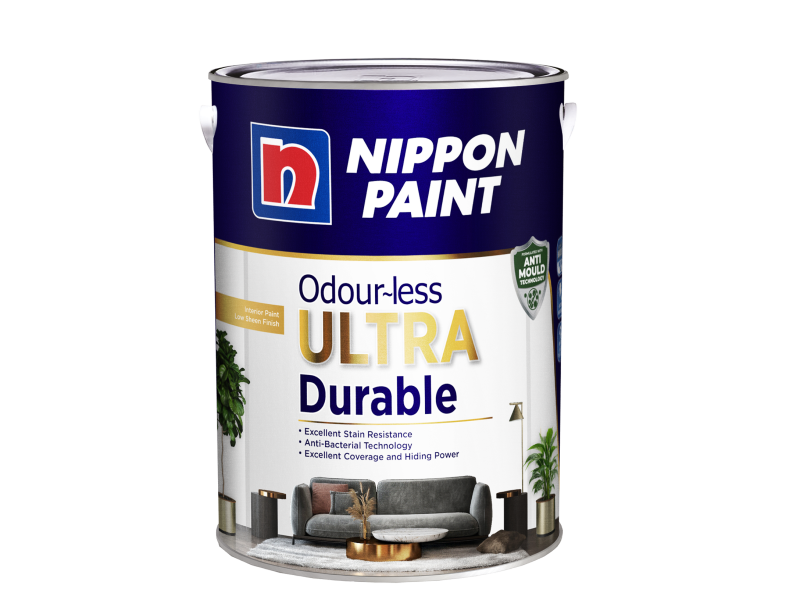
When it comes to creating a safe and healthy environment for your kids, Nippon Paint’s Odour-Less Ultra Durable offers the perfect solution. It’s designed with superior durability and excellent colour retention, and wiping marks and stains is easy – all you need is a damp cloth! With a luxurious sheen finish and excellent stain resistance, it’s ideal for high-traffic areas like living rooms, dining areas, and children’s rooms.
Moreover, the Odour-Less Ultra Durable is formaldehyde-free and low in VOC emissions. Its antibacterial properties and resistance to mould and fungus further enhance its environmental friendliness. Plus, it’s free from harmful chemicals like lead, mercury and heavy metals, making it safe for your family.
Certified under the Singapore Green Building Product Certification Scheme, Nippon Paint ensures both safety and sustainability, offering a splatter-resistant and easy-to-maintain solution for your home. Choose Nippon Paint today for a healthier, safer, and more durable paint for your child’s room!
| Tip!
For a flawless wall finish, consider Nippon Paint’s professional painting service. Our experienced team can help transform your child’s room into a safe haven, ensuring a smooth, durable finish that will last for years. |
Frequently Asked Questions About Paint For Kids’ Rooms
Are there alternatives to using paint for your children’s rooms?
Yes, there are several alternatives to traditional paint for a kid’s room. Some popular options include:
- Washable wallpaper: This type of wallpaper is durable, easy to clean, and resistant to stains, making it a great choice for a child’s room. It also comes in a wide range of colours and patterns to suit any décor.
- Vinyl wall coverings: Similar to washable wallpaper, vinyl wall coverings are highly durable, wipeable, and long-lasting. They’re also easier to install and can withstand the wear and tear of kids’ activities, like drawing on walls or accidental spills.
While washable wallpaper and vinyl wall coverings offer certain benefits, paint remains superior due to its endless customisation options, easy touch-ups, and long-term durability. Modern paints, such as Nippon Paint’s Odour-Less Ultra Durable, are also designed to be washable and resistant to stains, and they allow for full flexibility in colour and finish.
Additionally, paint is more cost-effective and offers low-VOC choices that are safer for your child’s health and better for the environment.
What is the best finish for a kid’s room?
When selecting the best finish for your child’s room, we generally recommend a satin or eggshell finish. These finishes are durable and easy to clean, making them ideal for handling everyday messes, like marks, stains, or dirt.
However, if there are existing imperfections on your walls, a flat or matte finish can also work. They’ll hide flaws better while still being somewhat cleanable.
For high-touch areas such as doors and baseboards, a semi-gloss or high-gloss finish is ideal due to its superior durability and ease of cleaning. However, these finishes can be quite shiny, so they’re typically better suited for trim and accent areas rather than the walls themselves.
Is it safe for a child to sleep in a freshly painted room?
It generally isn’t recommended for a child to sleep in a freshly painted room, as the air may still contain chemicals known as volatile organic compounds (VOCs). These chemicals can often still be released during drying, leaving children at risk of headaches, dizziness, or respiratory irritation.
For their safety, it’s best to allow the paint to cure fully and ventilate the room properly before letting them sleep in it. Depending on the type of paint used, this could take anywhere from 24 hours to a few days.
Opting for low-VOC or no-VOC paints can reduce these risks, as they emit fewer harmful chemicals. Always check the paint’s curing time and ensure the room is well-ventilated during and after the application to create a safe environment for your child.
How do I remove children’s paint from walls?
If your child has gotten creative with crayons or markers, here are some ways to clean the writing off walls:
- Spray with Selleys RP7 and wipe with a clean cloth.
- Use a multi-purpose cleaner and wipe with a damp cloth.
- Mix water and Selleys Sugar Soap, dip a sponge, and gently wipe the stain in a circular motion.
- Try a melamine sponge (magic eraser) for stubborn marks.
Always start gently to avoid damaging the paint or decolorising the wall. If the stain persists, you might need to try a more focused cleaning method or consider touching up the paint.
What is Formaldehyde and How to Remove It From Your Home?
